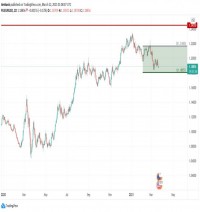|
The following analysis is by Susan Roberts, senior managing director at R. G. Niederhoffer Capital Management Inc. Ms. Roberts joined RGNCM in March 2008 and is responsible for interdisciplinary initiatives involving investment, strategy and business development. She has an extensive background in hedge fund and private equity fund of funds management, portfolio construction and manager selection, and served most recently as deputy director of banking and corporate finance at the Hearst Corporation. Ms. Roberts analyses the distinctive characteristics of high-frequency trading compared to commodity trading advisors in general and effect of these programs on an investor’s portfolio. The expression high-frequency trading is used here interchangeably with short-term trading. Key Features of Short-Term Strategies Short-term trading programs have distinctive qualities that are not well known. Yet these features can be important for investment decisions. Comparing short-term trading to long-term trend-following and other hedge fund styles is a good way to demonstrate its distinct characteristics. We will start with a description of the strategy, then do a comparative analysis of returns and discuss the implications for investors. Traders are typically classified as “short-term” if they have an average holding period of less than ten days. These trading programs are often systematic, developed using a broad range of quantitative methodologies. The instruments traded generally include a subset of the most liquid futures markets worldwide, including equity indices, fixed income, currencies and commodities, and may also include individual stocks, options and cash foreign exchange. Trade frequency can be quite high and many programs trade more than 10,000 round turns per year per $1 million traded. Because of the highly liquid nature of the strategy and the short average holding period, many managers are able to offer attractive liquidity terms to investors, with some even providing daily liquidity. A Small Universe Short-term trading is an evolving hedge fund strategy. The number of active managers is quite small and there are relatively few firms with long-term track records. We estimate that there are fewer than 50 firms with more than $50 million in assets. It is also a capacity-constrained strategy, with only one firm (that we know of) managing more than $8 billion. In January 2008 Newedge introduced the Alternative Edge Short-Term Trader Index, which tracks the daily performance of a group of 27 high-frequency traders. The broader Newedge CTA index, which includes 20 constituents, also contains a few (5)high-frequency managers. Short-Term Trading vs. Trend-Following Trend-following CTAs and short-term traders tend to thrive in different types of market volatility. The ideal environment for trend-followers is a market moving smoothly in one direction, with relatively low daily volatility. Put another way, trend-followers are long “long-term” volatility. Short-term traders, by contrast, do not tend to take positions dependent on the long-term direction of markets. The ideal environment for short-term traders is high intra-day and day-to-day volatility; they can be thought of as long “short-term” volatility. Performance profiles reflect this fundamental difference. To illustrate the difference between these two strategies, we compared the historical performance of two hypothetical portfolios. The first portfolio includes the 20 core constituents in the AlternativeEdge Short-Term Trader Index, and the second portfolio includes the constituents in the 2009 Newedge CTA Index, excluding the five short-term traders. The manager returns in each portfolio were equally weighted since 2000 or inception using monthly data (through April 2009). As you can see below, the portfolio of short-term traders had higher annualized returns over this 9 ˝ year period. Much more interesting, however, is the enormous difference in annualized volatility—the portfolio of short-term traders was much less volatile: The reason for this is the extremely low correlation among high-frequency managers. There is a huge variation among strategies, For example, some managers trade only a single asset class, while others trade many; some managers focus on intraday trading while others tend to hold trades for a week. The chart below shows the distribution of correlations between managers in the short-term trader portfolio (in blue) and the trend-follower portfolio (in red). You can see that trend-following CTAs tend to be highly correlated to each other (correlation more than 60%), while short-term traders are not. In fact, many short-term traders are actually negatively correlated to each other. Because of the low correlation among managers, it can be quite effective to invest in many different short-term traders, whereas with trend-followers, investing in a small group of managers may provide adequate diversification. Protective Effects of Short-Term Traders Many short-term trading programs are negatively correlated to other hedge fund styles as well as to major markets. Hence short-term trading provides protection during difficult times for other strategies. We can see this by looking at the ten worst months for funds of hedge funds since 2004. During those months, fund of funds lost 3.5% a month on average. Short-term traders (including all managers in the AlternativeEdge STTI, equally weighted) were up in all ten of these months, with an average monthly return of 1.4% (Table). 10 Worst Months for Fund of Funds, January 2004-January 2009
Adding several short-term traders to a portfolio of trend-following CTAs can also be a powerful diversifier. The chart below shows the annualized return and volatility of an equally weighted portfolio of (i) all twenty 2009 Newedge CTA constituents (left); (ii) the fifteen constituents that are not short-term traders (middle); and (iii) the five short-term traders in the index (right). Again, performance data is monthly since 2000, through April, 2009. When the five short-term traders are removed from the portfolio, you can see that the volatility jumps nearly 2%. In summary, short-term traders tend to improve portfolios by providing diversification and reducing volatility. Some short-term programs are designed to address specific risks. But investors should keep in mind that many managers have not been tested in a variety of market conditions. As you can see below, the portfolio of short-term traders had higher annualized returns over this 9 ˝ year period. Much more interesting, however, is the enormous difference in annualized volatility—the portfolio of short-term traders was much less volatile: | ||||||||||||||||||||||||||||||||||||||||
|
This article was published in Opalesque Futures Intelligence.
|





 RSS
RSS












